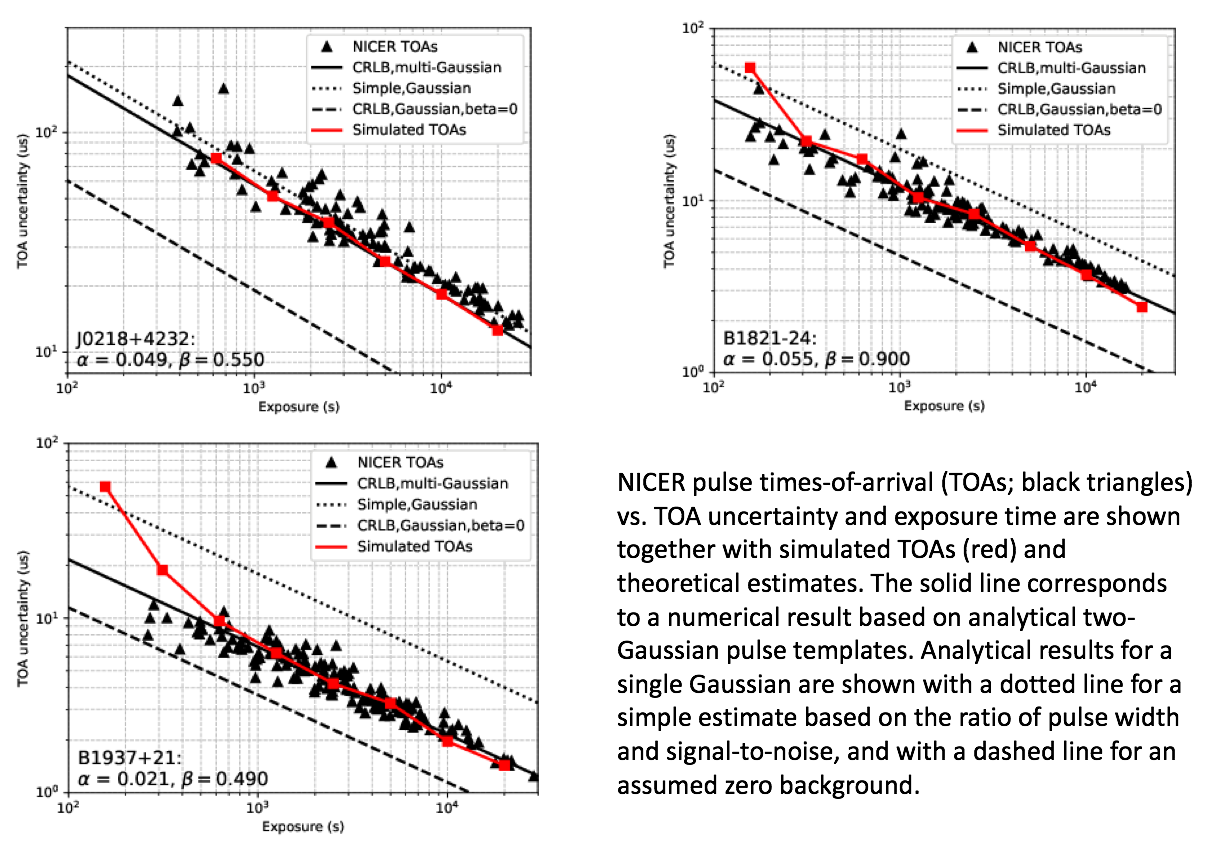NICER / ISS Science Nugget for February 21, 2019High-precision X-ray timing of three millisecond pulsars with NICERNICER enables unprecedented high-precision timing of millisecond pulsars without the pulse broadening and delays due to dispersion and scattering within the interstellar medium that plague measurements at radio wavelengths. The timing results below are from a year of data on the millisecond pulsars PSR B1937+21 and PSR J0218+4232, and nine months of data on PSR B1821-24. The X-ray pulse time-of-arrival uncertainties for the three pulsars are consistent with theoretical lower bounds and simulations based on their pulse shape templates and average source and background photon count rates. To estimate timing stability, we use the σz measure, which is based on the average of the cubic coefficients of polynomial fits to subsets of timing residuals. So far we are achieving timing stabilities σz ~ 3x10-14 for PSR B1937+21 and on the order of 10-12 for PSRs B1821-24 and J0218+4232. Within the span of our data we do not yet see the characteristic break point in the slope of σz. Detection of such a break would indicate that further improvement in the cumulative root-mean-square (RMS) timing residual is limited by timing noise. We see this break point in our comparison radio data sets for PSR B1821-24 and PSR B1937+21 on time scales of > 2 years. NICER
|



